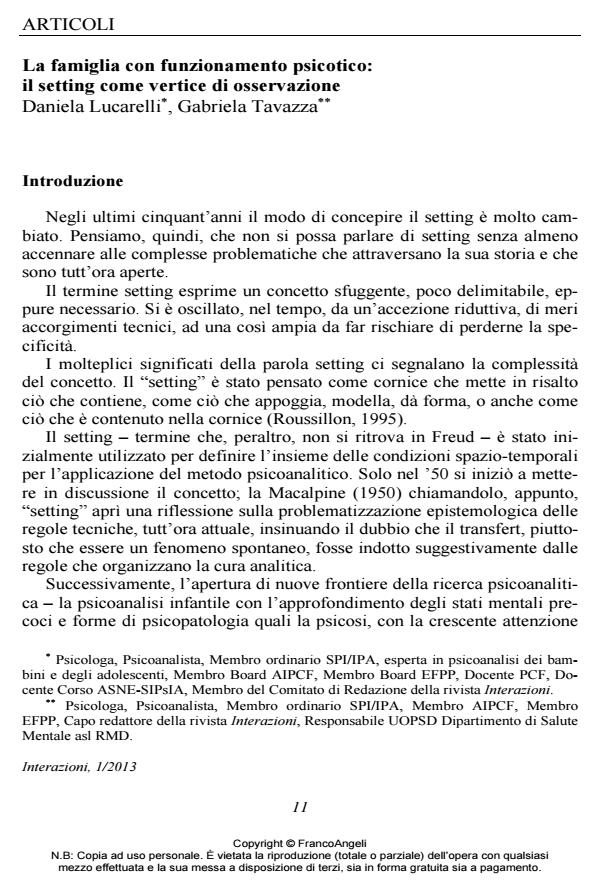Families with psychotic functioning. The setting as observation point
Journal title INTERAZIONI
Author/s Daniela Lucarelli, Gabriela Tavazza
Publishing Year 2013 Issue 2013/1
Language Italian Pages 16 P. 11-26 File size 500 KB
DOI 10.3280/INT2013-001002
DOI is like a bar code for intellectual property: to have more infomation
click here
Below, you can see the article first page
If you want to buy this article in PDF format, you can do it, following the instructions to buy download credits

FrancoAngeli is member of Publishers International Linking Association, Inc (PILA), a not-for-profit association which run the CrossRef service enabling links to and from online scholarly content.
The Authors present a reflection on the use of the setting in the psychotherapeutic treatment of families, paying specific attention to psychotically transacting families. After a brief theoretical explanation of the development of the concept of setting, they dwell on the conceptualizations of the analytical setting that they consider most relevant and original for dealing with the clinical situation presented, such as those of Winnicott, Bleger, Searles, and Kaës. The authors suggest that the setting should be reliable and regular, especially in the case of regressed patients, in order to favour the construction of a "facilitating environment". They then present some clinical material with an unusual use of the setting that can be considered the expression of the analyst’s mental activity while listening to the patients’ needs.
Keywords: Setting, families, changes in setting, analyst’s mental function.
Daniela Lucarelli, Gabriela Tavazza, La famiglia con funzionamento psicotico: il setting come vertice di osservazione in "INTERAZIONI" 1/2013, pp 11-26, DOI: 10.3280/INT2013-001002